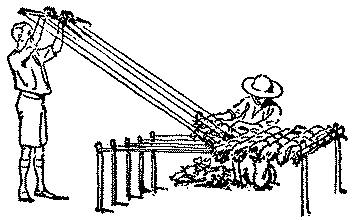So I finally got around to earthquake proofing the pantry. All it took was a bunch of four foot bungee cords which seemed to have just about the right amount of stretch to span our seven foot shelves. You could probably use the same four foot bungee cords to span an even longer shelf. I used eye hooks to anchor the ends of the cords.
Looking at the picture, the height of the cords on some of the shelves might not be optimal (looks like some of the jars could slip under in a good shaking). But, all in all, I’m pleased with the results.





